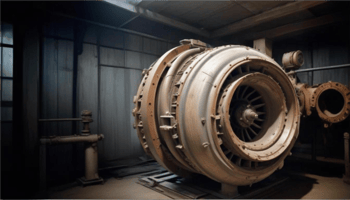In industries like manufacturing, the transportation of high-value assets such as specialized...
When equipment preservation in the Oil & Gas Industry becomes invalid
Equipment Preservation
Equipment preservation involves all the operations and procedures implemented to keep machinery and components in good condition in the oil & gas sector. This includes conservation practices, corrosion protection, lubrication, regular inspections, and functionality tests. The goal is to prevent deterioration and ensure that the equipment is ready for use when needed.
Invalidating Preservation
Preservation becomes invalid when the conditions or methods used to maintain the equipment are no longer effective or appropriate. This can occur for several reasons, including:
- Expiration of Preservation Period: Every preservation program has a specific duration. Once this period expires, the measures taken may no longer provide the necessary protection.
- Environmental Conditions: Significant changes in environmental conditions, such as humidity, extreme temperatures, or exposure to chemicals, can accelerate material degradation.
- Inadequate Interventions: If preservation procedures are not performed correctly or are omitted, equipment can deteriorate prematurely.
Impact on Quality!
Knowing exactly when the preservation of equipment becomes invalid has a direct impact on the quality of processes and products in the oil & gas industry:
Operational Reliability: Using equipment with invalidated preservation can lead to malfunctions or sudden failures. This not only compromises safety but can also cause production interruptions, resulting in financial losses.
Safety: Inadequately preserved equipment can pose a significant risk to worker safety. Corrosion, for example, can lead to leaks of hazardous gases or liquids, potentially causing serious incidents.
Product Quality: The quality of the final product can be compromised by using defective or underperforming equipment. For instance, a refinery with corroded components might contaminate the processed product, reducing its purity and commercial value.
Maintenance Costs: Lack of adequate preservation often leads to increased maintenance costs. Corrective interventions are generally more expensive compared to well-planned preventive maintenance.
To ensure that equipment preservation in the oil & gas sector is effective and long-lasting, it is important to adopt a Continuous Monitoring: Implement real-time monitoring systems to detect changes in equipment conditions and environmental factors.
HALOG is the solution to ensure continuos monitoring of an equipment. HALOG conduct regular audits to verify compliance with preservation procedures and identify areas for improvement.
Ensure that personnel are adequately trained on preservation techniques is fundamental but adopting HALOG solution will give you ability to keep equipment in optimal conditions. Knowing the exact moment when preservation becomes invalid is critical to prevent failures, ensure safety, and maintain high-quality standards.
Investing in monitoring technologies as HALOG, are essential steps to ensure the longevity and efficiency of equipment.



